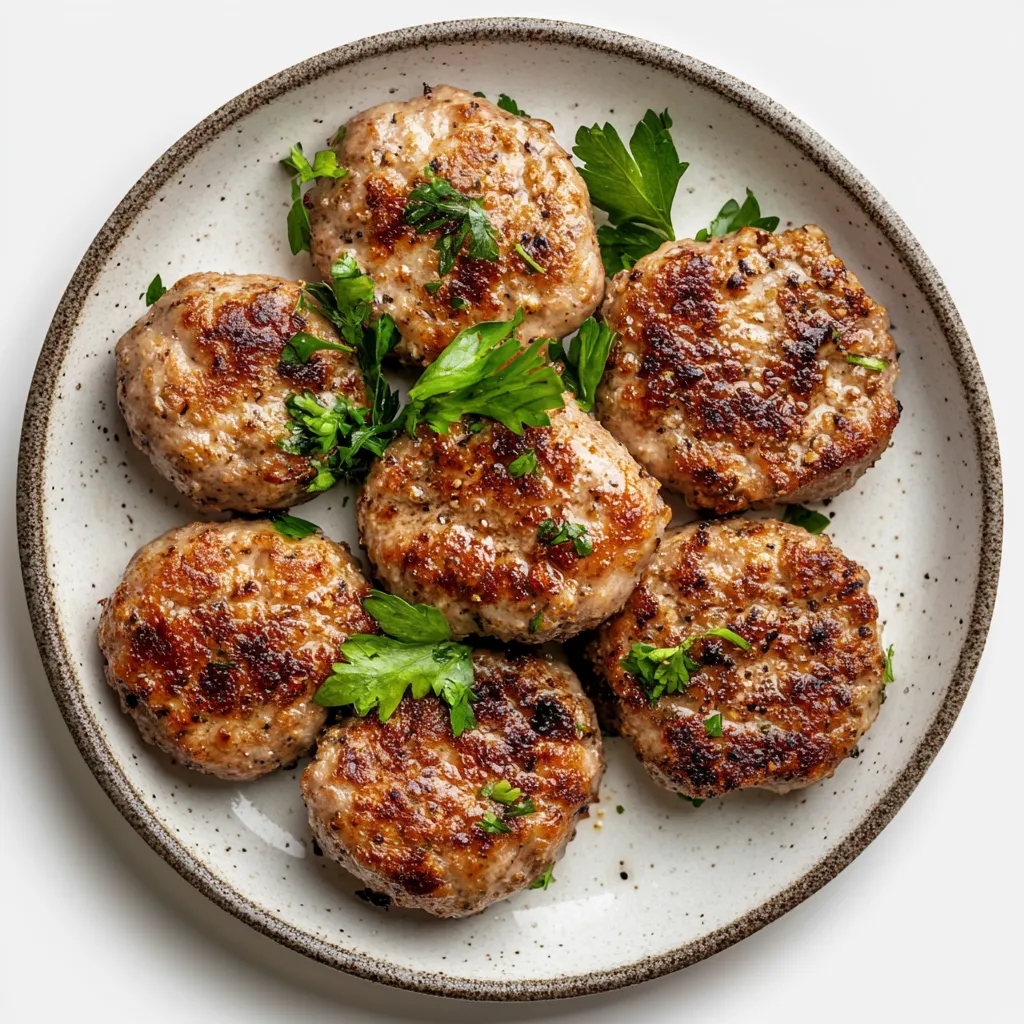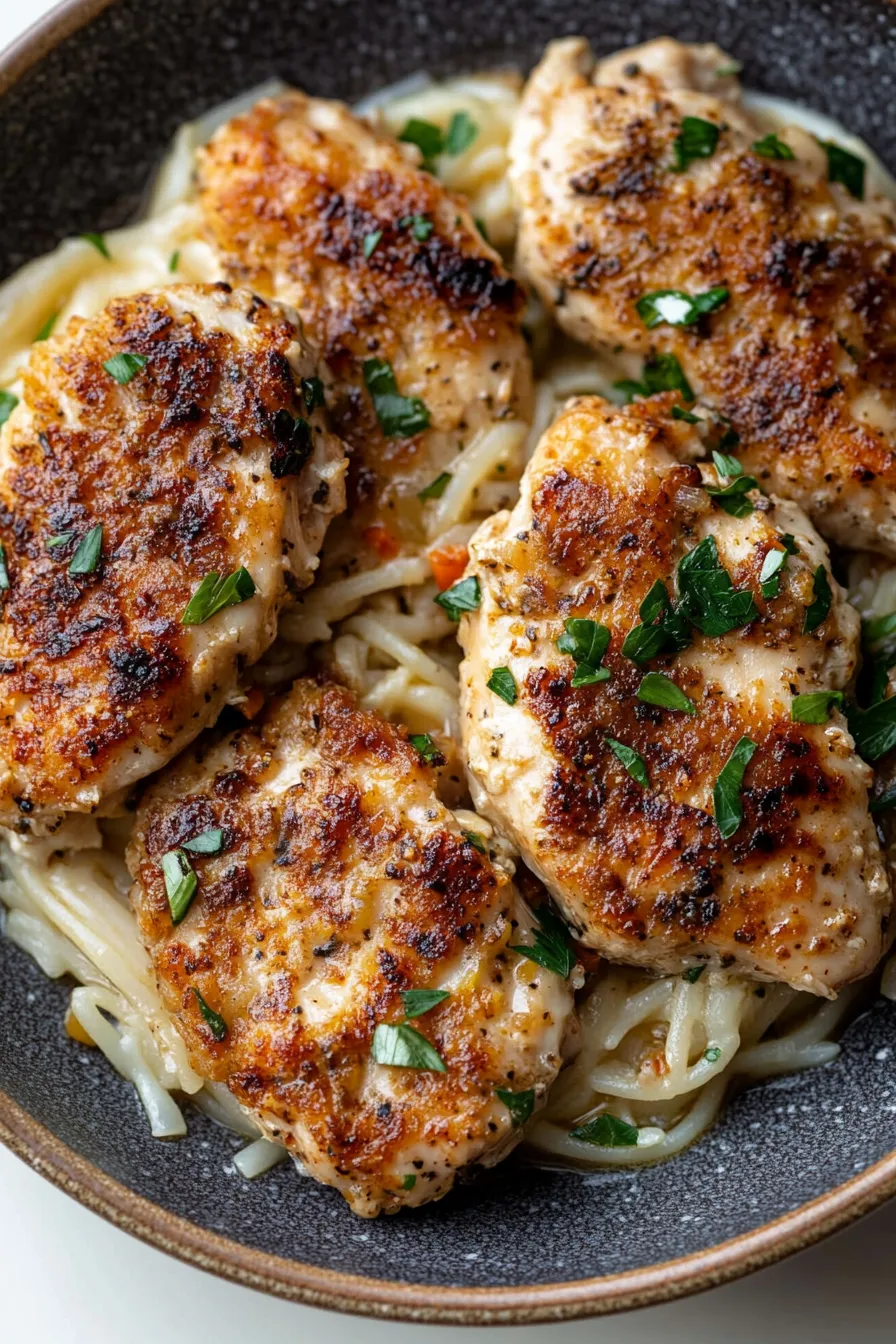 Pin it
Pin it
There's something magical about biting into a perfectly cooked Frikadelle - that first taste of the crispy exterior giving way to a tender, herb-infused center. These German meat patties have been a cornerstone of family meals for generations, carrying the essence of home cooking that transcends borders. Unlike their American hamburger cousins, Frikadellen offer a more complex flavor profile and a uniquely tender texture that makes them irresistible.
Last summer, I served these at a backyard gathering, and my German neighbor actually teared up, saying they tasted exactly like his mother's recipe. That's the power of traditional comfort food done right.
Essential Ingredients and Selection Tips
- Ground meat mix: Use 50/50 beef and pork for authentic flavor - ask your butcher for medium-fat content (20%) for the juiciest results
- Day-old bread: Traditional German bread works best, but any crusty white bread will do. Avoid pre-sliced sandwich bread
- Fresh parsley: Choose bright, crisp bunches - flat-leaf offers more flavor than curly
- Onions: Yellow onions provide the perfect balance of sweetness and flavor
- Dijon mustard: Opt for authentic French Dijon - it adds tanginess without overwhelming
- Marjoram: This often-overlooked herb is crucial for authentic German flavor
 Pin it
Pin it
Detailed Cooking Instructions
- Step 1: Perfecting the Bread Base
- Tear bread into small chunks rather than cutting - this creates better texture. Let it soak until completely softened but not mushy - about 8 minutes. Squeeze gently with your hands, not too hard - you want some moisture to remain. Break apart any larger pieces to ensure even distribution.
- Step 2: Creating the Flavor Foundation
- Sauté onions slowly until they become translucent and slightly golden. Add garlic only in the last minute to prevent burning. Let the onion mixture cool slightly before adding to meat. Season gradually throughout the process.
- Step 3: Mixing the Perfect Consistency
- Combine ingredients with clean hands - they're your best tools. Mix until just combined - overmixing can make patties tough. Let mixture rest for 15 minutes to allow flavors to meld. Keep a bowl of cold water nearby to prevent mixture sticking to hands.
- Step 4: Shaping and Cooking
- Wet hands slightly before shaping each patty. Make patties slightly thicker in the middle - they'll shrink as they cook. Press a small dimple in the center to prevent puffing. Don't move patties for first 3-4 minutes to develop proper crust.
I learned these techniques from my German grandmother, who insisted that proper Frikadellen should be 'fest aber saftig' (firm but juicy).
 Pin it
Pin it
The Art of Perfect Texture
What sets Frikadellen apart from regular hamburgers is their unique internal texture. After years of making these, I've discovered that the key lies in the bread-to-meat ratio. Too little bread and they become dense; too much and they're mushy. I've found that one thick slice of day-old bread per pound of meat creates that perfect, tender bite that Germans call 'locker' - meaning light and fluffy.
Making Ahead and Storing
These patties actually benefit from being made ahead. I often prepare the mixture in the morning, letting it rest in the refrigerator all day. This allows the flavors to develop fully, much like aging a fine wine. For busy weeknight dinners, I make a double batch and freeze half - they reheat beautifully in a covered pan with a splash of broth.
Serving Traditions
While Frikadellen are delicious hot from the pan, they're equally good at room temperature, making them perfect for picnics. In Germany, you'll often find them sliced and served on bread with mustard for breakfast. My favorite way is to serve them with classic potato salad and quick-pickled cucumbers - the tanginess perfectly complements the rich meat.
Regional Variations
Every German region has its own twist on Frikadellen. In Hamburg, they're often served with a fried egg on top. In the Rhineland, they add a bit of ground veal to the mixture. My family's version includes a pinch of nutmeg - a secret ingredient that always gets people wondering what makes them so special.
 Pin it
Pin it
After decades of making Frikadellen, they still remain one of my favorite comfort foods to prepare. There's something deeply satisfying about carrying on this traditional recipe, knowing that families across Germany have been making them the same way for generations. Whether you're serving them for a casual family dinner or packing them for a picnic, these versatile patties never disappoint.
Remember, the best Frikadellen are made with patience and attention to detail. Don't rush the process - each step, from soaking the bread to achieving the perfect golden crust, contributes to creating that authentic German flavor that makes these meat patties so special.
Frequently Asked Questions
- → Can I make Frikadellen ahead of time?
- Yes! You can prepare the meat mixture up to 24 hours ahead and keep it in the fridge. They also taste great cold or reheated the next day.
- → Why do you soak the bread in milk?
- Soaking the bread in milk keeps the Frikadellen moist and tender. It's a key step that gives them their signature texture.
- → Can I freeze these meat patties?
- Absolutely! Cooked Frikadellen freeze well for up to 3 months. Just thaw overnight and reheat in a pan or microwave.
- → What can I serve with Frikadellen?
- Traditional sides include German potato salad, pasta salad, crusty bread, or mashed potatoes. They're also great with mustard and pickles.
- → Can I use only beef instead of the beef-pork mix?
- Yes, you can use all beef if you prefer. While the traditional mix uses both meats, using just beef works fine too.
